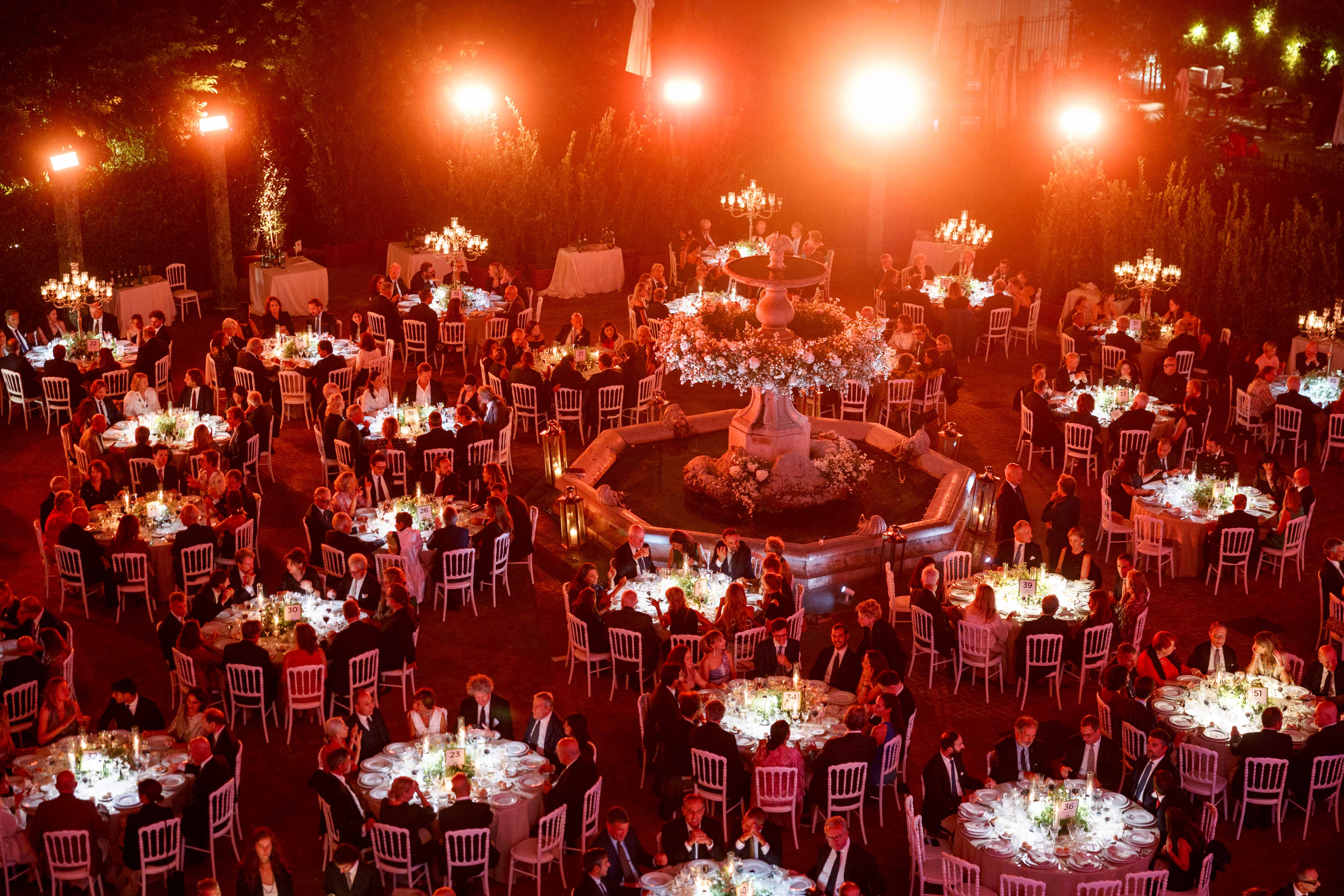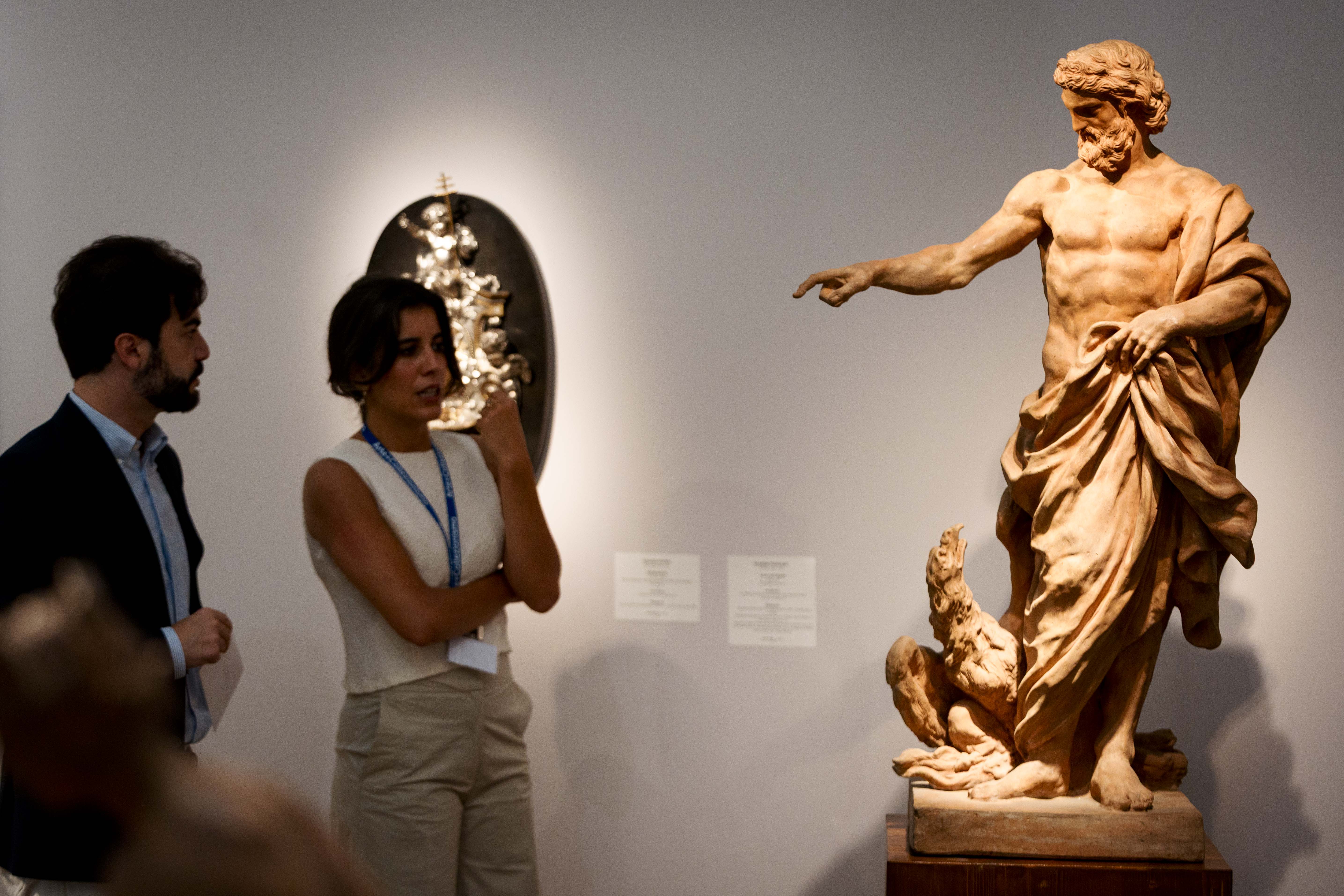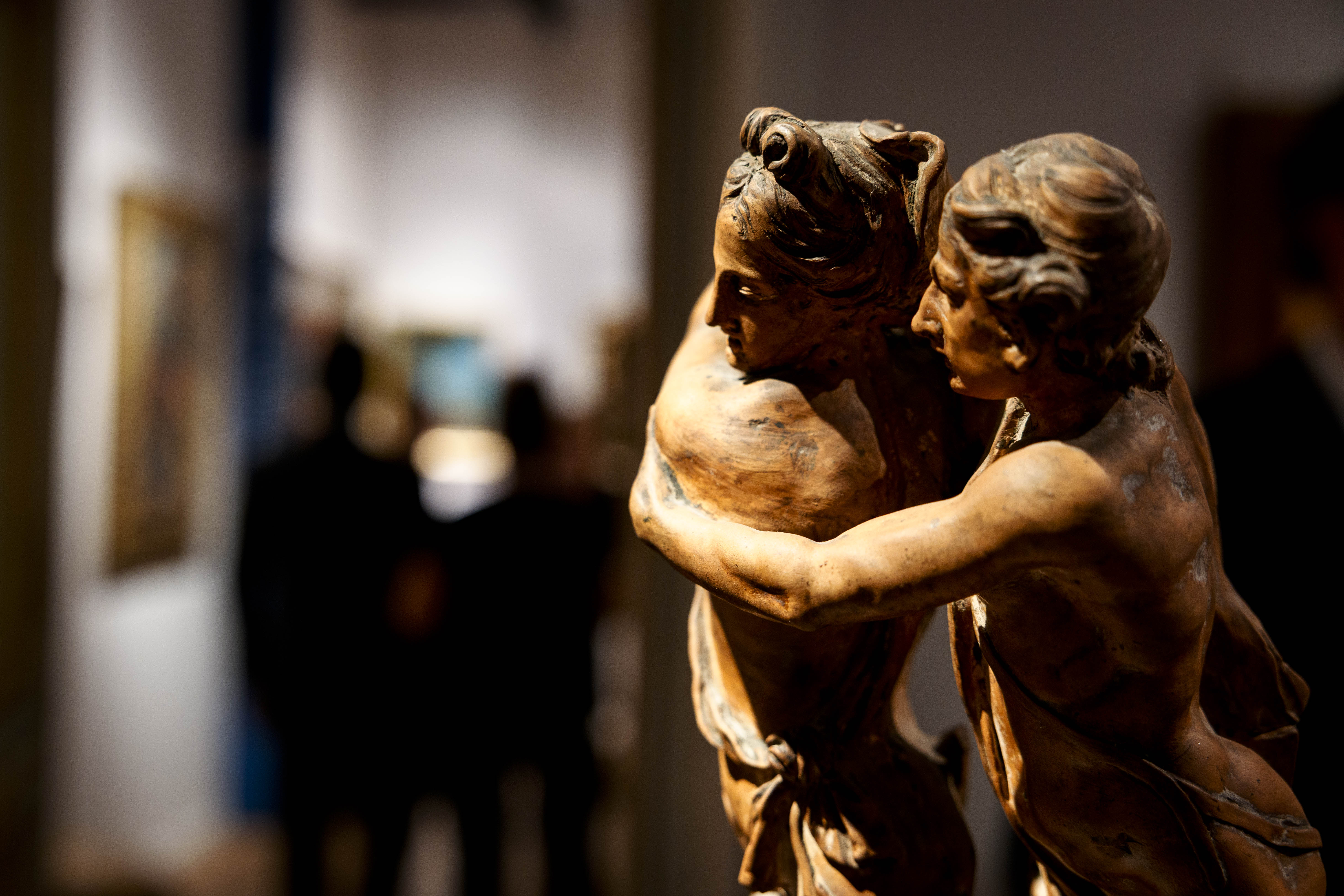Art and Collecting in Rome 2025 marked the second edition of the exhibition-market organised by the Italian Antique Dealers Association, this year hosted at Palazzo Barberini, home to the National Galleries of Ancient Art. Over five days of late-summer weather, the event opened the new Italian art market season, introducing a series of innovations set to leave a lasting mark on the history of fairs.
The “equinox of antiques” coincided almost exactly with that of autumn, running from 18 to 23 September in one of the country’s most prestigious museum settings. Sixty-three leading gallerists from Italy and abroad welcomed the public with carefully curated presentations.
At the press conference, organisers Alessandra di Castro and Bruno Botticelli, representing the Italian Antique Dealers Association, were joined by Thomas Clement Salomon, Director of the National Galleries of Ancient Art; Federico Mollicone, President of the Culture, Science and Education Commission; and Simona Renata Baldassarre, Councillor for Culture of the Lazio Region.

The collaboration is a historic one: the institution lends its spaces to the private sector, acknowledging its professionalism and authority, while the private sector, in turn, honours the venue with an exceptional selection of works.
Paintings, sculptures, drawings, armour, books, furnishings, and luxury objects chart a journey through art history, one that visitors could retrace while wandering through the exhibition rooms. For five days, the event transformed into a kind of ephemeral museum of the arts, staged in dialogue with the permanent collection and enriched by a programme of cultural events. On this occasion, the itinerary unfolded across two floors, ascending in elliptical turns along the spiral staircase designed by Francesco Borromini.
Inside, every stand is framed by a uniform white structure with blue detailing. The effect is visually consistent and harmonious, though it comes at the expense of personalised colour schemes. The compromise, however, ensures a coherent flow through the exhibition and keeps attention firmly on the artworks, which benefit from carefully considered lighting.

The catalogue of works deserves particular recognition. Its rigour is evident: the absence of weak inclusions reflects a highly selective process, one that should remain a standard for future editions. While the formula has proven successful, there is still room for minor refinements—from the practical addition of a cloakroom at the entrance to more complex issues such as regulating the exhibition’s microclimate.
Efforts focused solely on encouraging visitors to linger at the stands. In any case, guests have already responded with strong attendance, genuine curiosity, and a healthy level of purchases. This is a clear sign that the direction taken is the right one, dispelling the false notion that the fair format had lost its former charm. On the contrary, its power of attraction has been fully restored, thanks to the carefully considered adjustments made by the association’s members.

The success of the loans from antique dealers to the museum raises a question that is only seemingly provocative. Could this triumph serve as an opportunity to grant “a breath of fresh air” to the disproportionately high number of works languishing in the storage of Italian museums? In return, the venue for such an initiative could, on occasion, even be the gallery of a member of the Italian Antique Dealers Association.
It also offers a chance to study artefacts that are all too often overlooked or in need of conservation, within a venue equally familiar with exhibitions of high scholarly value. In this way, new encounters between the public and the private sector unfold—always true to the noble mission of cultural enhancement—opening the galleries to a broader audience than those who would normally cross their threshold.
Meanwhile, the Roman event is poised to fill the gap left by the Florence Biennale, creating a cultural and promotional axis that leaves no room for delays in the antiques calendar. For nearly a week, visitors had the rare chance to enter the museum and display the red “for sale” sticker on the exhibition labels.
This was further supported by another timely incentive. Since July of the same year, VAT on works of art had been reduced from 22% to 5%, offering welcome relief during the summer heat. Within just two months, Rome—through the combined reforms of Palazzo Chigi and Palazzo Barberini—emerged as both witness and guarantor of a new chapter in the world of antiques.
26 September 2025


